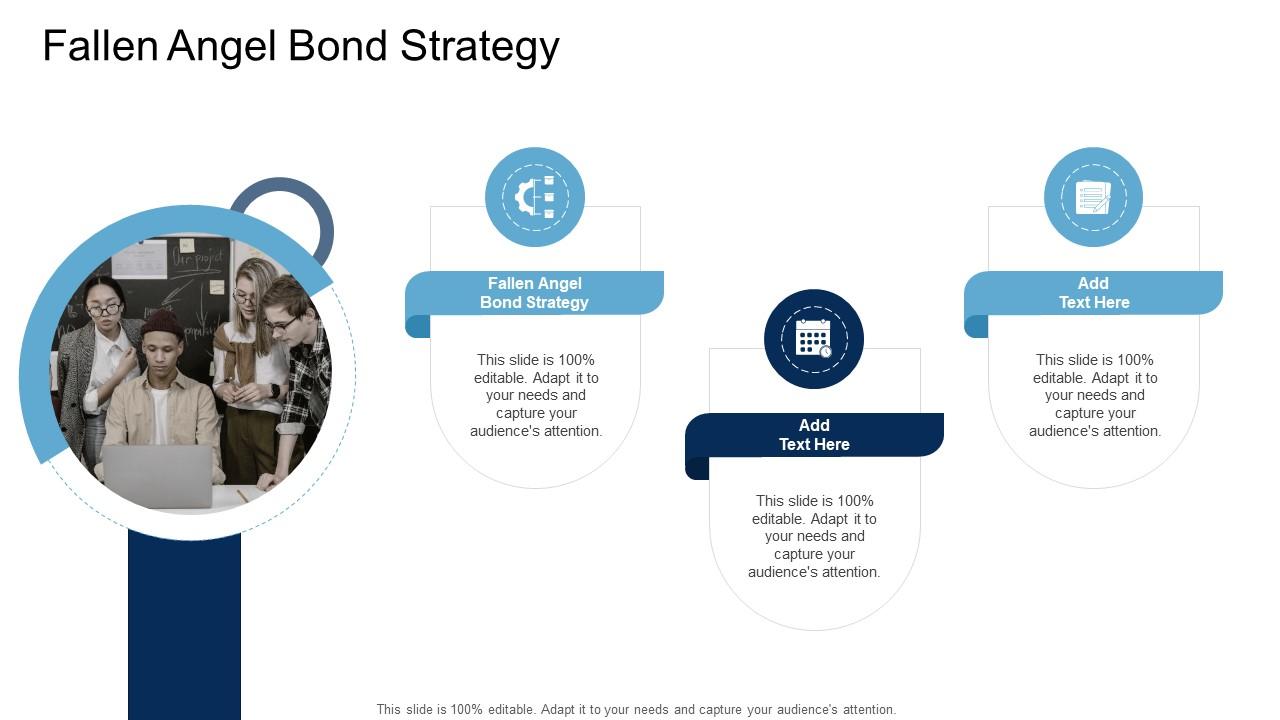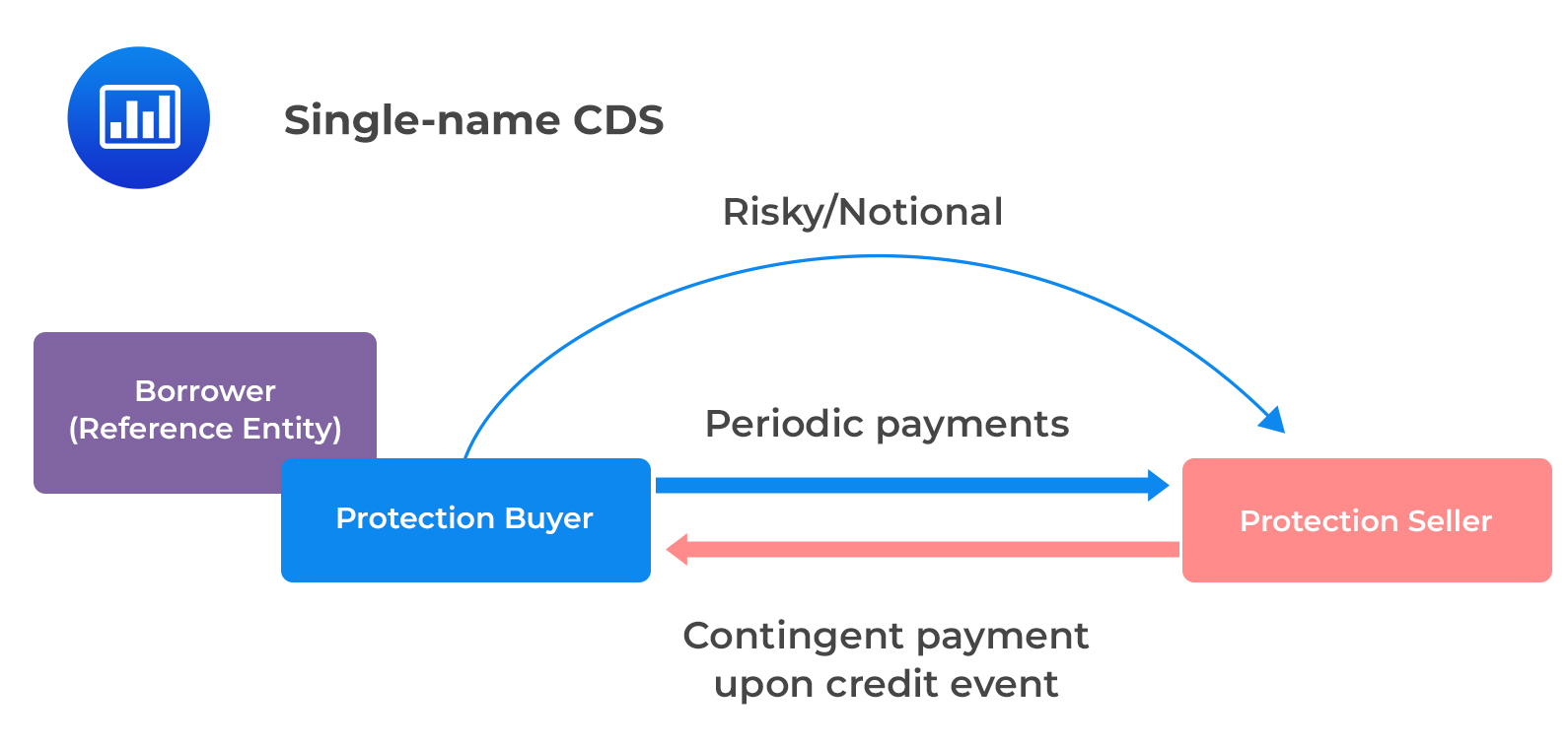

Finance
How To Buy Gamestop Stocks
Published: January 18, 2024
Learn how to buy Gamestop stocks and make smart investments in finance. Get expert tips, strategies, and insights to grow your wealth.
(Many of the links in this article redirect to a specific reviewed product. Your purchase of these products through affiliate links helps to generate commission for LiveWell, at no extra cost. Learn more)
Table of Contents
- Introduction
- Understanding Gamestop Stocks
- Researching Gamestop Stocks
- Choosing a Stock Broker
- Opening a Stock Trading Account
- Buying Gamestop Stocks
- Managing your Gamestop Stock Portfolio
- Understanding Stock Market Trends
- Setting a Gamestop Stock Investment Strategy
- Monitoring Gamestop Stock Performance
- Selling Gamestop Stocks
- Conclusion
Introduction
Welcome to the world of investing in stocks! If you are interested in purchasing Gamestop stocks, you’ve come to the right place. Gamestop, a renowned retail company in the gaming industry, has attracted a lot of attention in recent years due to its volatile stock performance. Buying Gamestop stocks can be an exciting and potentially profitable investment opportunity, but it is crucial to approach it with knowledge and research.
Gamestop stocks have been the subject of great speculation and scrutiny, driven by factors such as shifting consumer habits, digitalization of the gaming industry, and market dynamics. This article will guide you through the process of buying Gamestop stocks, from understanding the fundamentals to managing your investments effectively.
Before diving into the details, it is essential to note that investing in stocks carries risks. The stock market is highly unpredictable, and the value of stocks can fluctuate, sometimes drastically, based on numerous factors. It is vital to have a long-term perspective and to approach investing with a well-thought-out strategy.
In this article, we will explore step-by-step instructions on how to buy Gamestop stocks, including researching the company, selecting a stockbroker, opening a stock trading account, purchasing stocks, managing your portfolio, and monitoring stock performance. By understanding these aspects, you will be better equipped to make informed decisions and navigate the ever-changing stock market.
So, if you’re ready to embark on your journey into the world of Gamestop stock investments, let’s get started by gaining a solid understanding of Gamestop stocks and their potential.
Understanding Gamestop Stocks
Before diving into the investment process, it is crucial to gain an understanding of Gamestop stocks and the factors that can impact their value. Gamestop is a retail company specializing in video games, consumer electronics, and related merchandise. As a publicly traded company, Gamestop issues stocks that represent ownership in the company.
The value of Gamestop stocks can be influenced by a variety of factors. One of the primary factors is the company’s financial performance. Investors closely scrutinize Gamestop’s revenues, profits, and growth prospects to assess the company’s overall health and potential for future success. News about new game releases, partnerships, or strategic initiatives can also impact stock prices.
It’s important to note that Gamestop stocks, like all stocks, are traded in the stock market. The stock market is a place where buyers and sellers meet to trade stocks. The price of a stock is determined by supply and demand. If there is high demand for Gamestop stocks, the price tends to rise, and vice versa.
When considering investing in Gamestop stocks, it is crucial to understand that stock prices can be highly volatile. Gamestop has experienced significant price fluctuations in the past, driven by a variety of factors including market speculation, investor sentiment, and short-term trading activity. This volatility can present both opportunities and risks for investors.
Additionally, it’s essential to stay informed about industry trends and events that can impact Gamestop’s business. The gaming industry is constantly evolving, with new technologies, platforms, and market trends shaping consumer preferences. Keeping an eye on these trends can help investors anticipate potential opportunities or challenges that may impact Gamestop’s stock performance.
Moreover, Gamestop stocks can also be influenced by broader market forces. Economic conditions, interest rates, geopolitical events, and global market trends can impact stock prices across the board. Understanding these factors and their potential impact on Gamestop stocks can help investors make more informed investment decisions.
Overall, comprehending the dynamics of Gamestop stocks involves keeping track of the company’s financial performance, staying informed about industry trends, and understanding the broader market forces that can influence stock prices. This knowledge will serve as a foundation for making strategic investment decisions when dealing with Gamestop stocks.
Researching Gamestop Stocks
Research is a crucial step before investing in any stock, including Gamestop. It allows you to gather information and make informed decisions about whether investing in Gamestop stocks aligns with your investment goals and risk tolerance. Here are some key aspects to consider when researching Gamestop stocks:
- Financial Performance: Start by examining Gamestop’s financial statements, including revenue, profit, and cash flow. Pay attention to trends over the past few years to identify any patterns or areas of concern. Analyze the company’s balance sheet to evaluate its assets, liabilities, and equity.
- Industry Analysis: Gain insights into the gaming industry as a whole and understand how Gamestop fits within it. Stay up to date with trends, such as the shift towards digital downloads and online gaming. Evaluate Gamestop’s position in the market and how it compares to its competitors.
- Company News and Developments: Monitor news about Gamestop to stay informed about any recent developments or announcements that may impact the company’s stock price. Look for information on new product launches, partnerships, and strategic initiatives.
- Expert Opinions and Analyst Reports: Read research reports and opinions from financial analysts who cover Gamestop. These reports typically provide insights into the company’s performance, target price, and potential risks.
- Regulatory Filings: Review Gamestop’s regulatory filings, including its annual reports (10-K) and quarterly reports (10-Q). These filings provide in-depth information about the company’s operations, risks, and financial performance.
- Management Team: Evaluate the experience and track record of Gamestop’s management team. Look for signs of effective leadership and a clear vision for the company’s future.
- Technical Analysis: Consider using technical analysis tools to assess Gamestop’s stock price movements. Analyze historical price and volume data to identify patterns and trends that may indicate future price movements.
- Risk Factors: Understand the potential risks associated with investing in Gamestop stocks. Consider factors such as competition, technological advancements, regulatory changes, and market volatility.
Researching Gamestop stocks requires a combination of fundamental analysis, industry knowledge, market insights, and understanding of risk factors. It’s important to approach research with a critical mindset and consider multiple sources of information to form a comprehensive view of Gamestop and its stock potential.
Remember, research is an ongoing process. Stay updated with the latest news and trends that may impact Gamestop stocks. Regularly reassess your investment thesis based on new information and market dynamics. By conducting thorough research, you can make more informed investment decisions and increase your chances of success when investing in Gamestop stocks.
Choosing a Stock Broker
When it comes to buying Gamestop stocks, one of the first steps is to select a reliable stock broker. A stock broker is a financial intermediary that facilitates the buying and selling of stocks on behalf of individual investors. Here are some key factors to consider when choosing a stock broker:
- Reputation and Reliability: Look for a well-established and reputable stock broker. Research their history, reviews, and customer feedback to ensure they have a track record of reliable service and trustworthy operations.
- Account Types and Fees: Consider the types of accounts offered by the stock broker. Some brokers provide different account options such as individual, joint, or retirement accounts. Assess the fees associated with account maintenance, trade execution, and any additional services they offer.
- Trading Platform: Evaluate the stock broker’s trading platform. It should be user-friendly, offer real-time market data, and provide tools and features that align with your investment preferences. Test out the trading platform through a demo account, if available, to ensure it meets your needs.
- Research and Analysis Tools: Determine whether the stock broker offers research and analysis tools that can assist you in making informed investment decisions. Look for features such as real-time stock quotes, market news, financial reports, and analyst recommendations.
- Customer Service: Consider the level of customer service provided by the stock broker. Ensure that their customer support is responsive, reliable, and easily accessible, particularly during market hours when immediate assistance may be required.
- Security Measures: Verify the stock broker’s security measures to protect your personal and financial information. Look for brokers who employ encryption technology and two-factor authentication to safeguard your account.
- Educational Resources: Assess whether the stock broker provides educational resources and investment tools to help you enhance your knowledge and skills as an investor. This can include tutorials, webinars, articles, and investment research.
- Availability and Accessibility: Consider the stock broker’s availability in your region and whether they offer the trading instruments, such as Gamestop stocks, that you desire to invest in. Additionally, assess the accessibility of their platform from various devices, including desktops, mobile devices, and tablets.
It’s important to take your time in choosing a stock broker that aligns with your investment goals and preferences. Compare the offerings and fees of different brokers to find the one that suits your needs and provides the necessary tools and resources for successful Gamestop stock trading. Once you’ve chosen a stock broker, you can move forward with opening a stock trading account.
Opening a Stock Trading Account
Once you’ve chosen a stock broker, the next step is to open a stock trading account. A stock trading account allows you to buy and sell stocks, including Gamestop stocks, through the broker’s trading platform. Here’s an overview of the process:
- Complete the Application: Visit the website of your chosen stock broker and locate the option to open an account. Fill out the required information in the application form, including your personal details, contact information, and financial information.
- Provide Identity Verification: As part of the account opening process, you may need to provide documents to verify your identity. This can include a copy of your identification card, passport, or driver’s license. Some brokers may also require additional documents, such as proof of address.
- Agree to Terms and Conditions: Carefully read and agree to the terms and conditions set by the stock broker. This includes understanding the broker’s fees, trading policies, and any other important information regarding the use of their trading platform.
- Review and Confirm: Review all the information provided in the application form for accuracy. Double-check your personal details and make any necessary corrections before submitting the application.
- Fund Your Account: Once your account application is approved, you will need to deposit funds into your stock trading account. Most brokers offer various funding methods, such as bank transfers, credit/debit card payments, or electronic payment services. Choose the option that works best for you and transfer the desired amount of funds to your account.
- Set Up Two-Factor Authentication: To enhance the security of your stock trading account, consider setting up two-factor authentication (2FA). This adds an extra layer of protection by requiring a verification code in addition to your password when accessing your account.
- Explore the Trading Platform: Familiarize yourself with the stock broker’s trading platform. Take some time to explore its features, including the ability to search for stocks, place orders, view account information, and access research tools.
- Read the User Guide: Many stock brokers provide user guides or tutorials to help you navigate their trading platform effectively. Take advantage of these resources to learn how to use the platform’s features and maximize its potential.
It is important to note that the account opening process may vary slightly depending on the stock broker. Some brokers may require additional documentation or have specific requirements for certain account types. Ensure you follow the instructions provided by your chosen broker to successfully open your stock trading account.
Once your account is set up and funded, you’re ready to start buying Gamestop stocks and building your investment portfolio. Make sure to continue monitoring the market, conducting research, and adjusting your investment strategy as needed to optimize your stock trading experience.
Buying Gamestop Stocks
Now that you have opened a stock trading account, you can proceed with buying Gamestop stocks. Here are the steps to follow:
- Research the Stock: Before making a purchase, conduct thorough research on Gamestop stocks. Review the company’s financials, recent news, industry trends, and analyst opinions to develop a well-informed investment thesis.
- Log into Your Trading Account: Access your stock trading account using the login credentials provided by your broker. Ensure that you have sufficient funds available in your account to make the purchase.
- Search for Gamestop Stocks: Use the search function on the trading platform to locate Gamestop stocks. Look for the stock symbol “GME” or the company name “Gamestop” to find the correct listing.
- Review the Stock Details: Once you find Gamestop stocks, review key information such as the current price, the bid-ask spread, and the recent price history. Pay attention to the stock’s performance indicators and any relevant news updates displayed on the platform.
- Decide on the Order Type: Choose the type of order you want to place. The most common types include market orders (buying at the current market price), limit orders (buying at a specific price or better), and stop orders (buying if the stock reaches a certain price).
- Enter the Order Details: Enter the number of Gamestop stocks you want to purchase and specify the order type. If you’re placing a limit order, enter the price at which you are willing to buy the stocks.
- Review and Confirm: Take a moment to review your order details, including the number of stocks and the total cost. Ensure that all information is correct before proceeding.
- Place the Order: Once you are satisfied with the order details, click the “Buy” or “Place Order” button to submit your purchase request.
- Monitor the Order: Keep an eye on your stock trading account to see if your order is executed. Depending on market conditions, the order may be filled immediately or take some time to be matched with a seller.
- Confirmation: Once your order is filled, you will receive a confirmation notice. This will include details such as the execution price and the number of Gamestop stocks you purchased.
It’s important to remember that stock prices can fluctuate rapidly, so the price at which your order is executed may differ from the price you initially saw. Additionally, it’s a good practice to set realistic expectations and avoid making impulsive decisions based on short-term market movements.
As a Gamestop stockholder, you now have a vested interest in the company’s performance. Stay informed about any major developments, continue monitoring the stock’s performance, and regularly assess your investment strategy to ensure it aligns with your financial goals.
Buying Gamestop stocks can be an exciting endeavor, but always remember to invest responsibly and consider seeking advice from a financial advisor if you’re unsure about any aspects of your investment decisions.
Managing your Gamestop Stock Portfolio
Once you have purchased Gamestop stocks and become a stockholder, it’s important to actively manage your stock portfolio to optimize your investment. Effective portfolio management can help you monitor the performance of your stocks and make informed decisions. Here are some key aspects to consider when managing your Gamestop stock portfolio:
- Regularly Monitor Performance: Keep a close eye on the performance of your Gamestop stocks. Monitor price movements, track any news or updates related to the company, and assess the overall trends in the stock market. Regularly reviewing the performance will give you insights into how your investment is faring.
- Diversify your Portfolio: It’s important not to put all your eggs in one basket. Consider diversifying your stock portfolio by investing in a variety of stocks from different industries and sectors. This can help mitigate the risk associated with any single stock, including Gamestop.
- Stay Informed: Continuously research and stay informed about Gamestop’s financial performance, industry trends, and competitive landscape. Subscribe to relevant news sources, follow expert opinions, and keep track of any regulatory or market developments that may impact the company’s stock price.
- Review and Rebalance: Periodically review your portfolio to ensure it aligns with your investment goals and risk tolerance. If one stock, such as Gamestop, becomes a disproportionately large portion of your portfolio due to price fluctuations, consider rebalancing by selling some shares to maintain diversification.
- Set Realistic Goals: Establish realistic goals for your stock portfolio in terms of returns and timeframes. Consider your risk tolerance and investment horizon when setting these goals, and adjust them periodically as market conditions and personal circumstances evolve.
- Have a Long-Term Perspective: Investing in stocks, including Gamestop, should typically be approached with a long-term perspective. Stock prices can be influenced by short-term fluctuations, but focusing on the company’s long-term potential and overall financial health can help you make more informed decisions.
- Consider Dividend Reinvestment: If Gamestop offers dividends, consider reinvesting them back into the stock to acquire additional shares. This strategy can help compound your investment over time and potentially increase your overall returns.
- Keep Emotions in Check: It’s natural for stock prices to fluctuate and for investors to experience emotional reactions. However, it’s essential to avoid making impulsive decisions based on fear or greed. Stick to your investment strategy and make rational decisions based on thorough research.
- Review Tax Implications: Understand the tax implications of owning stocks and how they may apply to your Gamestop stock investment. Consider consulting a tax professional to ensure you are aware of any tax obligations and can make informed decisions regarding your stocks.
Remember, managing your Gamestop stock portfolio requires ongoing attention, research, and disciplined decision-making. Regularly reassess your investment strategy, stay informed, and be prepared to make adjustments as needed. By actively managing your portfolio, you can maximize the potential returns while effectively managing the associated risks.
Understanding Stock Market Trends
Having a solid understanding of stock market trends is essential for successful investing, including when dealing with Gamestop stocks. Stock market trends refer to the general direction of stock prices over a specific period of time. By analyzing and interpreting these trends, investors can gain insights into the overall sentiment and behavior of market participants.
Here are a few key concepts to help you understand stock market trends:
- Bull Market: A bull market refers to a period when stock prices are rising, and investor confidence is high. During a bull market, the overall market sentiment is optimistic, often driven by positive economic indicators, strong corporate earnings, and increasing investor demand.
- Bear Market: In contrast, a bear market is characterized by falling stock prices and a pessimistic outlook. Typically, a bear market is accompanied by declining economic indicators, negative news, and reduced investor confidence. During such times, investors tend to anticipate further price drops, leading to increased selling pressure.
- Market Cycles: Stock market trends often follow cycles, moving between bull and bear markets. These cycles can vary in duration from several months to several years. Understanding market cycles can help investors identify the prevailing trend and adjust their investment strategy accordingly.
- Market Indices: Market indices, such as the S&P 500 or NASDAQ, provide insights into the overall performance of a specific subset of the stock market. These indices are composed of a diversified portfolio of stocks, and their movements can reflect broader market trends. Monitoring the performance of market indices can give a sense of the overall direction of the market.
- Technical Analysis: Technical analysis involves studying historical price and volume data to identify patterns, trends, and potential future price movements. It utilizes various tools and indicators to analyze market trends and determine entry and exit points for investments.
- Market Sentiment: Market sentiment refers to the overall attitude and perception of market participants towards investing in stocks. It can be influenced by factors such as economic indicators, geopolitical events, corporate earnings reports, and news headlines. Market sentiment can sway investor behavior and impact stock prices.
- News and Events: News and events can have a significant impact on stock market trends. Major economic reports, geopolitical developments, central bank decisions, and company-specific news can all influence market sentiment and drive stock prices in a particular direction.
- Investor Behavior: Understanding investor behavior is crucial for comprehending stock market trends. Investors’ emotions, such as fear and greed, can drive market movements. Additionally, behavior such as trend following or contrarian strategies can further impact stock price movements.
While stock market trends provide valuable insights, it’s important to remember that the market can be unpredictable, and trends can change rapidly. It’s crucial to conduct thorough research, diversify your portfolio, and approach investing with a long-term perspective. By understanding stock market trends and incorporating them into your investment analysis, you can make more informed decisions when trading Gamestop stocks or any other investment.
Setting a Gamestop Stock Investment Strategy
Setting a clear investment strategy is vital when investing in Gamestop stocks or any other individual stock. An investment strategy provides a roadmap for your investment decisions, helping you navigate the complexities of the stock market and make informed choices. Here are some key steps to consider when setting a Gamestop stock investment strategy:
- Define Your Financial Goals: Begin by determining your financial goals and objectives. Are you investing for long-term growth, a specific financial milestone, or generating regular income? Understanding your goals will shape your investment strategy and help you evaluate your progress along the way.
- Assess Your Risk Tolerance: Evaluate your risk tolerance, or how much volatility and uncertainty you are comfortable with. Consider factors such as your time horizon, financial obligations, and emotional resilience during periods of market turbulence. This assessment will guide you in choosing an appropriate balance between risk and potential returns.
- Determine Investment Time Horizon: Consider your investment time horizon, or the length of time you plan to hold your Gamestop stock investments. Are you investing for the short-term or the long-term? Different time horizons may require different strategies and levels of risk tolerance.
- Research and Analysis: Conduct thorough research and analysis on Gamestop and its industry. Evaluate the company’s financial health, growth prospects, competitive landscape, and any potential risks or challenges. Stay informed about industry trends and news that may impact Gamestop’s stock performance.
- Allocate Your Investment Portfolio: Decide how much of your investment portfolio you want to allocate to Gamestop stocks. Diversifying your investments across multiple stocks, industries, and other asset classes can help spread risk and potentially enhance returns. Consider your risk tolerance and diversification goals when determining your allocation.
- Decide on an Exit Strategy: Establish an exit strategy for your Gamestop stock investments. Determine the conditions under which you would consider selling your stocks, such as specific price targets, changes in the company’s fundamentals, or shifts in market dynamics. Having a clear exit strategy can help you avoid emotionally-driven decisions and ensure a disciplined approach to your investments.
- Regularly Review and Reassess: Continuously monitor the performance of your Gamestop stocks and regularly review your investment strategy. Stay informed about any developments that may impact the company and the stock market as a whole. Make adjustments to your strategy as needed based on changes in your financial goals, risk tolerance, or market conditions.
- Consider Professional Advice: If you’re unsure about setting an investment strategy or navigating the stock market, consider seeking professional advice from a financial advisor. They can provide personalized guidance based on your individual circumstances, goals, and risk tolerance.
Setting a Gamestop stock investment strategy requires thoughtful consideration of your financial goals, risk tolerance, research, and ongoing assessment. By defining a clear strategy, you can approach your investments with confidence, make informed decisions, and navigate the ever-changing stock market more effectively.
Monitoring Gamestop Stock Performance
Monitoring the performance of your Gamestop stocks is crucial to staying informed and making informed investment decisions. By regularly tracking the stock’s performance, you can assess its progress, identify potential opportunities or risks, and adjust your investment strategy accordingly. Here are some key steps to effectively monitor Gamestop stock performance:
- Use Stock Market Tools: Utilize stock market tools and platforms to access real-time information about Gamestop and its stock price. Popular financial websites and trading platforms provide a wealth of data, including live stock quotes, charts, and historical price data.
- Track Key Metrics: Pay attention to key metrics that are relevant to Gamestop’s performance. This can include financial ratios, such as earnings per share (EPS), price-to-earnings (P/E) ratio, and return on equity (ROE). Monitoring these metrics can give you insights into the company’s profitability, valuation, and efficiency.
- Follow Gamestop News: Stay informed about Gamestop’s latest news and developments. Monitor official announcements, earnings releases, industry updates, and any regulatory changes that may impact the company. This information can provide valuable insights into the company’s future prospects and potential stock price movements.
- Keep an Eye on Industry Trends: Monitor trends and developments within the gaming industry. Stay informed about new releases, emerging technologies, shifts in consumer behavior, and competitive dynamics. Understanding these industry trends can help you assess the positioning of Gamestop and its potential for growth.
- Track Analyst Opinions: Pay attention to analyst opinions and recommendations about Gamestop stocks. Analyst reports can provide insights into the company’s fundamentals, target price, and potential risks. While it’s important to consider multiple sources, analyst opinions can help you gauge market sentiment and gather additional perspectives.
- Set Up Price Alerts: Utilize price alert features offered by your trading platform or financial websites. Set price alerts for Gamestop stocks at levels that are of interest to you, whether it’s specific support or resistance levels, price targets, or percentage changes. Price alerts can notify you when the stock reaches your desired price, allowing you to take action accordingly.
- Review Financial Reports: Regularly review Gamestop’s financial reports, including quarterly earnings reports (10-Q) and annual reports (10-K). These reports provide detailed information about the company’s financial performance, strategic initiatives, and future prospects.
- Consider Technical Analysis: Utilize technical analysis techniques to analyze stock price patterns, trends, and potential support and resistance levels. Technical indicators and chart patterns can provide insights into possible future price movements. However, it’s important to combine technical analysis with fundamental analysis for a comprehensive view.
- Stay Informed about Market Conditions: Keep track of broader market conditions and trends. Understand the impact of economic indicators, interest rates, geopolitical events, and market sentiment on Gamestop’s stock performance. These factors can influence the overall direction of the stock market and potentially impact Gamestop stocks.
By consistently monitoring Gamestop stock performance and staying informed about relevant news and market trends, you can make informed decisions about your investment strategy. Regularly reassess your investment thesis, review your portfolio, and adjust as needed based on changes in Gamestop’s stock performance and overall market conditions.
Selling Gamestop Stocks
Selling Gamestop stocks is a crucial part of managing your investment portfolio. Whether you want to take profits, manage risk, or reallocate capital, knowing when and how to sell your Gamestop stocks is essential. Here are some key steps to consider when selling Gamestop stocks:
- Review Your Investment Strategy: Before selling your Gamestop stocks, revisit your investment strategy and financial goals. Assess whether the reasons for your investment in Gamestop still align with your current objectives. If they no longer do, selling may be a suitable option.
- Evaluate the Stock’s Performance: Analyze the performance of Gamestop stocks since your initial purchase. Consider factors such as the stock’s price movement, overall market performance, and any relevant news or developments affecting the company. Determine if the stock has met your expectations or if it has encountered any significant changes.
- Set Clear Selling Criteria: Establish specific criteria that will trigger the sale of your Gamestop stocks. This can include reaching a target price, a percentage gain or loss, a change in the company’s fundamentals, or a shift in market dynamics. Having clear criteria helps you make rational decisions based on predetermined conditions.
- Consider Risk Management: Selling Gamestop stocks can be a strategic move to manage risk. Evaluate your portfolio diversification and assess whether selling Gamestop stocks would reduce your exposure to potential market downturns or volatility. Determine if reallocating your capital to other investments better aligns with your risk management strategy.
- Monitor Market Conditions: Stay informed about market conditions and trends that may impact Gamestop’s stock performance. Keep an eye on industry developments, competitors, economic indicators, and any news that may affect the company’s prospects. This information can help you assess the potential future direction of the stock.
- Consult with a Financial Advisor: If you are uncertain about when to sell your Gamestop stocks, consider consulting with a financial advisor. They can offer objective insights and guidance based on their expertise and experience. A financial advisor can help you evaluate your investment strategy and make well-informed decisions aligned with your financial goals.
- Execute Your Selling Plan: Once your predetermined selling criteria are met, it’s time to execute your selling plan. Log into your stock trading account and place a sell order for your Gamestop stocks. Choose the type of order that aligns with your desired selling strategy, such as a market order or a limit order.
- Review Confirmation: After selling your Gamestop stocks, review the confirmation notice provided by your broker. It will include details such as the selling price, the number of shares sold, and any applicable fees or commissions.
- Assess the Outcome: Evaluate the outcome of your decision to sell Gamestop stocks. Compare the selling price to your purchase price and account for any transaction costs. Reflect on the reasons for selling and evaluate the impact on your investment portfolio and overall financial goals.
Selling Gamestop stocks requires careful consideration of your investment strategy, performance evaluation, risk management, and market conditions. By making informed decisions based on your predetermined criteria and regularly reassessing your portfolio, you can optimize your investment returns and align your investments with your financial objectives.
Conclusion
Investing in Gamestop stocks can offer both opportunities and challenges. By following the steps outlined in this guide, you can navigate the process of buying, managing, and selling Gamestop stocks with a greater sense of confidence and understanding.
It is crucial to start by understanding the fundamentals of Gamestop stocks and conducting thorough research. By staying informed about the company’s financial performance, industry trends, and broader market forces, you can make more informed investment decisions.
Choosing a trustworthy and reliable stock broker is essential for a smooth investment experience. Take the time to evaluate different brokers based on their reputation, fees, trading platform, and customer service to find the one that suits your needs.
After opening a stock trading account, you can buy Gamestop stocks based on your research and investment strategy. Monitor the stock’s performance, industry trends, and any relevant news that may impact its value. Regularly review and rebalance your portfolio to ensure it aligns with your long-term investment goals.
Remember that the stock market is subject to volatility, and stock prices can fluctuate. It’s essential to remain disciplined, set realistic goals, and avoid making emotional decisions based on short-term market movements.
Lastly, regularly monitor the performance of your Gamestop stocks, stay up to date with market trends, and be ready to adapt your investment strategy as needed. Successful investing requires ongoing learning, evaluation, and the ability to adjust to changing market conditions.
By following these steps and maintaining a disciplined approach, you can increase your chances of success when investing in Gamestop stocks. However, it is always advised to seek professional advice or consult with a financial advisor if you are uncertain about any aspect of your investment decisions.
Investing in stocks involves risk, and past performance is not indicative of future returns. It’s important to conduct thorough research, consider your risk tolerance, and understand the potential rewards and risks associated with investing in Gamestop stocks.
With patience, diligence, and a sound investment strategy, investing in Gamestop stocks can be a rewarding experience that aligns with your financial goals and aspirations.














